articles
Understanding Modi’s Sanskrit Epithets – Part II
Published
9 years agoon
By
ihar
Author: Dr. Jayakumar Srinivasan
Press Release: indiafacts.org/understanding-modis-sanskrit-epithets-part-ii/
This article will explain the significance of the two Sanskrit phrases Satyameva Jayate and Ahimsa̅ Paramo Dharmaḥ.
Have you noticed that Modi’s speeches are sprinkled with many phrases that are not in Hindi? Here is an occasion, worth watching, where he quoted several verses in succession, as his Idea of India, like “Tena Tyaketena Bhunjītha̅H”, “Janani janmabhūmiśca svarga̅dapi garīyasī”, “Ekam sat viprāḥ bahudha̅ vadanti”, etc. Most of these are in “Samskritam”, or “Sanskrit” in Anglicized form. What do these quotes mean?
In Part I of this article series, I provided some background – What is Sanskrit, what are the Upanishads, Pura̅nas and itiha̅sas, etc. In this segment, I will explain two phrases:
- Satyameva Jayate
- Ahimsa̅ Paramo Dharmaḥ
Satyameva Jayate
The phrase Satyameva Jayate is no news to Indians, who will proudly recognize it in the Indian emblem. That this phrase must be the national slogan was first proposed by Pandit Madan Mohan Ma̅laviya (1), the then President of the Indian National Congress, in its session of 1918 at Delhi.
This statement appears in the Mundaka Upanishad (2).
सत्यमेव जयते नानृतं, सत्येन पन्था विततो देवयानः ।
येनाक्रमन्त्यृषयो ह्याप्तकामा, यत्र तत् सत्यस्य परमं निधानम् ॥३.१.६॥
Transliteration
satyameva jayate nānṛtaṁ, satyena panthā vitato devayānaḥ.
yenākramantyṛṣayo hyāptakāmā, yatra tat satyasya paramaṁ nidhānam[3.1.6]
Meaning:
[The one who is committed to] Truth alone wins; not [the one who is given to] untruthfulness. The path of the celestial chariot is laid with truthfulness. By this indeed those who know, who have fulfilled their desires go and claim that brahma-loka, where the greatest treasure of truthfulness is present.
We are now given the task of interpreting the word “Satyam”. A̅di Shankara̅ca̅rya wrote commentaries on many Upanishads, one of which is the Mundaka Upanishad. Hence, we are able to refer to his commentary of this Upanishad (3) (4). Here, Shankara̅ indicates that a value, being abstract, neither, wins or loses. However, when values reside in a person, who expresses them, then that person is benefited. Hence, Shankara̅ interprets “Satyam” as “Satyava̅n”, namely one who speaks the truth, and “anṛtam” (falsehood) as “anṛtava̅di” (5), one, who is given to speaking untruth.
Why should one be committed to the truth? Shankara̅ gives two reasons: (a) it is well known that a person committed to truth succeeds, and (b) only a person, who is free from deceit, delusion, fraud, pride, vanity, and falsehood (which are all relative) will gain the absolute truth (which is the subject matter of the Upanishad).
Now, if it is argued that resorting to adharma seems to result in apparent gains, we say that these gains are short-lived. A person who commits an act of dishonesty or crime suffers (a) psychological punishment – the guilt (b) Human Law based punishment and (c) Vedic punishment – the impact of Karma (3).
Second, the word Satyam is an upalakṣaṇa, namely indicatory, i.e. not to be taken literally as referring to only the practice of truth (6). Instead, it indicates all righteous values that are embodied in a mature person – such as those like absence of pride, accommodation, compassion, and uprightness (listed below under the heading Ahimsa̅ Paramo Dharmaḥ). For example, when it is said “She is an honest and capable leader”, this will generally mean to include forthrightness, truthfulness, absence of greed, etc.
We have seen Modi attempting to change the chemistry of Indian thinking. Employees coming to work late, citizens keeping homes clean, but streets dirty, public services not provided in a timely fashion, and corruption, have been the order of the day. However, by embodying positive attributes, Modi has demonstrated that he would like Indians to reach out to their own treasure trove of values, to be committed to doing what is right and the need of the hour, and making Bha̅rat truly prosperous.
Ahimsa̅ Paramo̅ Dharmaḥ
There are many references in the Mahabharata to this statement (7). Here, the context is the unfoldment of the virtues of a “bra̅hmana” – one who is ever involved in the pursuit of the Self and is committed to studying and teaching the Vedas. Such a person should be alert to the causing of hurt, and implied an almost absolute restraint from causing any type of pain to other living beings. It served well, because it was a time when the varnadharma was intact, i.e. when the brāhmaṇās pursued scholarship and educated the community (rather than day-trading), and kṣatriyās did their duty of protecting the people and the nation (rather than sell it). Today, the varnadharma is largely not followed and the boundaries of duty have become porous. Hence, for the current times, we should interpret this edict broadly, to neutralize a common misunderstanding among many Indians today that Ahimsa̅ universally implies being passive to all assaults on the self, community or the nation.
Ahimsa̅ is based on a commonly sensed ethic: I do not want to be physically hurt, deceived, cheated, or emotionally hurt by anybody, and I also know that others expect the same of me. In chapter 13 of the Bhagavad Gita (8), Sri Krishna mentions several values, and then emphasizes their importance by referring to them as Jna̅nam, Knowledge, a word generally reserved for Self-Knowledge.
अमानित्वमदम्भित्वमहिंसा क्षान्तिरार्जवम् ।
आचार्योपासनं शौचं स्थैर्यमात्मविनिग्रहः ॥ १३–८॥
Ama̅nitvam adambhitvam ahimsa̅ kṣāntiḥ a̅rjavam
A̅ca̅ryopa̅sanam śoucam sthairyam ātmavinigrahaḥ || 13-8 ||
…
Absence of demanding respect, absence of self-conceitedness, absence of tendency to hurt, accommodation, uprightness or straightforwardness, diligent study of sha̅stram under the guidance of one’s teacher, cleanliness (physical and mental), steadfastness, mastery over oneself.
Ahimsa̅ is a value that commits a person to doing the least amount of harm, all things considered. A plant-based animal-free diet is born of this value. A tiger cannot ask “should I eat a deer or a pear for breakfast?”. Only a human being can ask that question. Just like all values, Ahimsa̅ must be interpreted carefully for various circumstances. If I have a bandit in my home pointing a gun at my wife and children, and I feel sufficiently confident, my value for Ahimsa̅ allows me to overpower or even kill him cautiously, because it prevents the killing of several people at the expense of one, an act for which a just jury might acquit me. It is Ahimsa̅ that makes me protect my life by giving up my leg to Gangrene! Ahimsa̅ makes me carry bags made of cloth to the market despite being offered the convenience of plastic bags. It is the value of Ahimsa̅ that made Yudhishthira and his brothers go after Kaurava̅s after exhausting all other less bloody options. Arjuna’s confusion in the battlefield resulted from his attachment to his relatives being pitted against a call for duty, a situation that all human beings are exposed to. Neutralizing this confusion required a strong potion of self-knowledge from Krishna.
The principle of “Sa̅ma Da̅na Bheda Dand̟a” has been used since the times of Ramayana and the Dharmasha̅stras for righteous Governance:
- Sa̅ma – Diplomacy, Reconciliation (In Maha̅bha̅rata, Krishna’s first attempt at peacemaking with Duryodhana)
- Da̅na – Sacrifice, Partially and Unilaterally Letting go of legitimate claims (Pandava̅s seeking just five villages)
- Bheda – Division, Threat (Befriending Karna)
- Dand̟a – Punishment,Subjugation (War)
Here (9) is a good analysis of the uses and misuses of this principle in Indian thought and application. In his musical composition “Sarasa Sa̅ma Da̅na Bheda Dand̟a” of the 19th century, Kakarla Tyagara̅ja (10) praises Sri. Ra̅ma for following this principle with Ra̅van̟a. The Manu Smriti (11) advocates using force for protection of the self, of brāhmaṇās and of women; and Kurma Pura̅n̟a (12) treats the use of force according to rules of scriptures as Ahimsa̅.
In an attempt to explain this important saying, many articles (13) (14) err by quoting a new form of this truism attributed to Swami Chinmaya̅nanda quoting from Maha̅bha̅ratha, wherein they add a second line “Dharma himsa̅ tatha̅iva cha”, meaning “so too is violence in service of Dharma.” But, I could trace neither of the two references.
Our responses to threats are based on how insecure we are. The vow of a sannya̅si is “Abhayam̟ sarvabhūtebhyaḥ – may all beings live free from fear (of me!)”. So, the sannya̅si is happy not hurting anyone and will not feel the need to defend himelf with the same sense of urgency as the average person. Ahimsa̅ puts brakes on an animal urge to hurt other beings. Mahabha̅rata and Arjuna are proof that a righteous war doesn’t mean a deviation from the value of Ahimsa̅.
In Patanjali’s Ashta̅nga Yoga (15), Maharshi Patanjali begins with Yama. Yama are disciplines that help regulate the individual’s interaction with society. Here, Patanjali advises five: Ahimsa̅, satyam (truth), a̅steyam (non-stealing), brahmacharyam (focus and consolidation of energy) and aparigraham (non-hoarding). So, we see here the emphasis of Ahimsa̅ as the most important value for the individual. Patanjali’s view is that these values are to be cultivated long before the practice of A̅sana and Prana̅ya̅ma can be pursued.
The value of Ahimsa̅ is so all encompassing that our forefathers have chosen to highlight just this one value, whose mastery would bring in its wake, most of the other values.
The idea of “turning the other cheek” is a Christian idea (16). Ironically, the countries that profess Christianity are the ones, which violated this biblical edict and went on to perpetrate aggression over the last five centuries of native cultures (genocide of American Indians, enslavement of Africa, Colonization of the Eastern Hemisphere, etc.), and have also succeeded in conditioning Indians into believing that the idea of passive submission is an Indian thing!
When Ahimsa̅ is interpreted in a narrow or selfish sense, passivity and weakness arise. A proper interpretation of Ahimsa̅ will make a country dynamic and progressive. Countries based on Shariah law, where the value of Ahimsa̅ is openly flaunted within their own communities, abound in oppression.
In the succeeding articles, I will continue unfolding more phrases from the seminal texts of Sanātana Dharmaḥ that Narendra Modi likes to quote.
Bibliography:
- Pandit Madan Mohan Malaviya. [Online] [Cited: 24 August 2016.] http://www.mahamana.org/.
- Mundaka Upanishad. Sanskrit Documents. [Online] [Cited: 5 July 2016.] http://sanskritdocuments.org/doc_upanishhat/mundaka.pdf.
- Varadarajan, Divyajnana Sarojini. The Mundaka Upanishad with Sankarabhashyam. Coimbatore : Selva Nilayam, 2010. p. 513.
- Apte, Mahadev Chimanaji. Mundaka Upanishad with Shankaracharya Bhashya and Anandagiri Tika. s.l. : Anandashram, 1882. pp. 38-39.
- Quoting from Commentary.
- Dayananda Saraswati, Swami. Mundaka Upanishad, Part 2. Chennai : Arsha Vidya Research & Publication Trust, 2006. p. 330.
- The Adi Parva, Vana Parva and Anusha̅sana Parva. The Complete Mahabharata. http://sanskritdocuments.org/mirrors/mahabharata/.
- Dayananda Saraswati, Swami. Bhagavad Gita Home Study Course. Chennai : Arsha Vidya Research and Publication Trust, 2011. p. 359. Vol. 7.
- P. K. Gautam, “Understanding Kautilya’s Four Upayas”, Institute for Defense Studies and Analysis, June 20, 2013.
- Sri. Tyagaraja, “Sarasa Sa̅ma Da̅na Bheda Dand̟a”, http://www.karnatik.com/c1083.shtml, 1767-1847.
- Manu Smriti 8.349
- Kurma Purana Uttara-bhaga 11.15
- Maheshwari, Krishna. Ahimsa̅ Paramo Dharma. Hindupedia. [Online] [Cited: 24 August 2016.] http://www.hindupedia.com/en/Ahimsa_Paramo_Dharma#Vana_Parva.
- Ahimsa̅ Paramo Dharma: The Half-Truth. Sanskriti. May 13, 2014, The Sanskriti Magazine.
- Patanjali. Ashtanga Yoga. 600 BCE – 300 BCE. https://www.ashtangayoga.info/source-texts/yoga-sutra-patanjali/.
- The Holy Bible, King James Version. New York : American Bible Society, 1999. “But I say unto you, That you resist not evil: but whosoever shall smite you on your right cheek, turn to him the other also”.
You may like
articles
Team IHAR at the AMI Festival held in the Indian Museum, Kolkata
Published
5 days agoon
December 9, 2025By
Suprabho Roy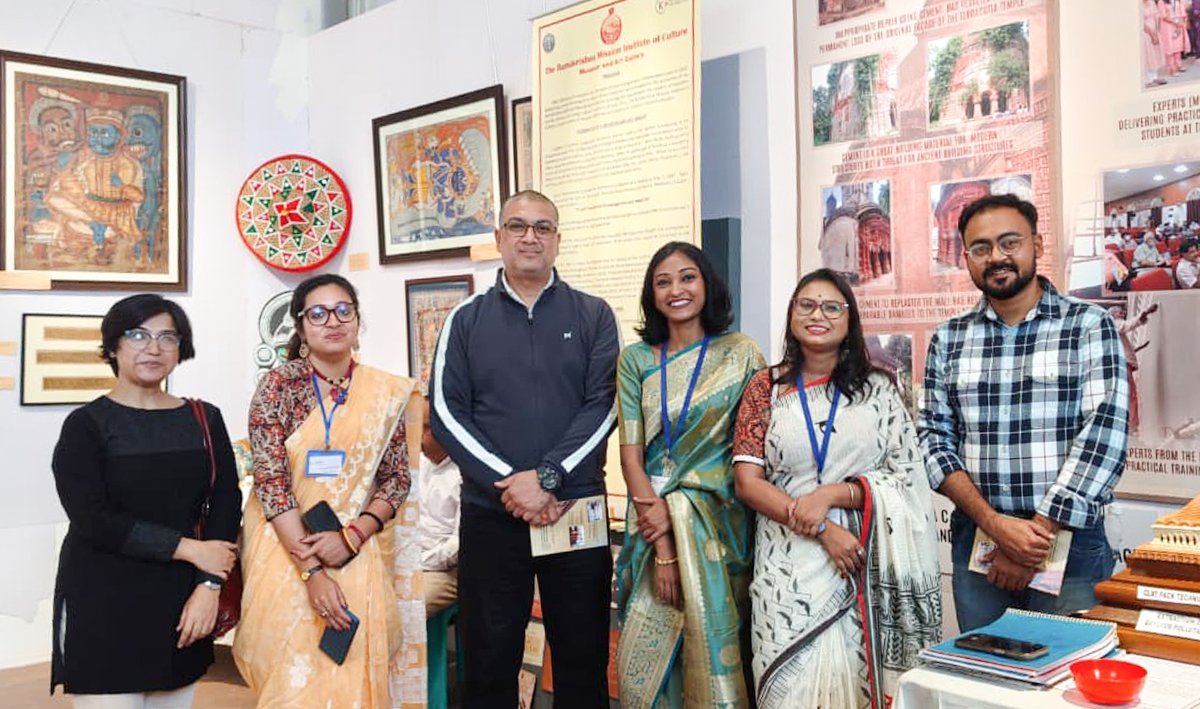
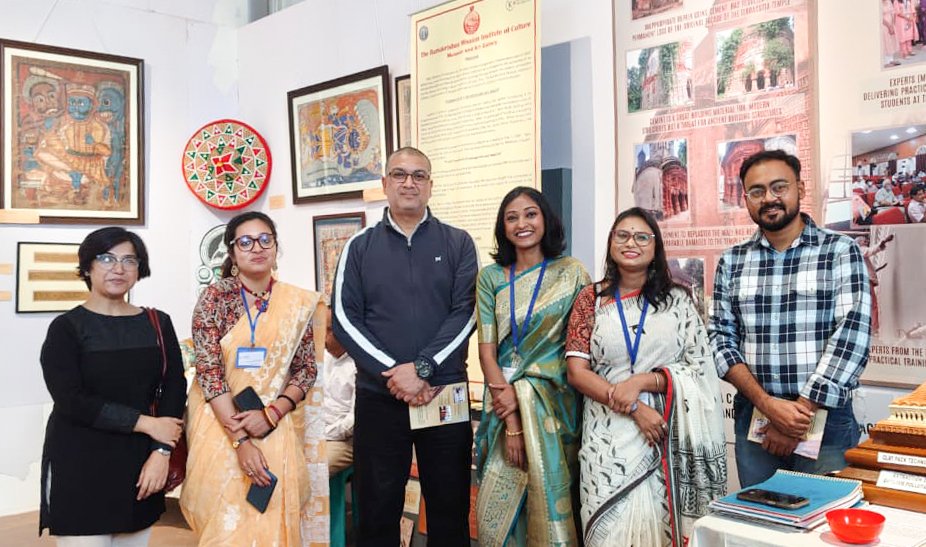
The AMI Festival at the Indian Museum, Kolkata beautifully brings rural India into the heart of the city. Walking through the exhibition feels like stepping into a living archive of village life — from terracotta traditions and folk paintings to everyday tools, stories, and songs that have shaped generations.
Curated with warmth and sincerity, the festival creates a shared space where artisans, researchers, museum professionals, and visitors connect deeply with India’s rural heritage. Here, heritage isn’t just displayed — it is felt, heard, and celebrated.
Every object carries a community’s memory, every performance echoes the rhythm of village life, and every exchange bridges the distance between our rural roots and the urban world.
This year, IHAR proudly participated with three representatives.
Our member Mouli Roy collaborated from Devalgarh Museum, while Nabanita Ghoshal and Ronita Mondal represented Team REACH Foundation, Kolkata, engaging with visitors on the urgent need to conserve historic buildings and safeguard cultural heritage.
Adding to this spirit of collaboration, IHAR Director-Operations Sri Surya Sarathi Roy and IHAR Digital Media Incharge Suprabho Roy, accompanied by Suchira Nandi Purkayastha, Journalist, The Times of India, visited the ongoing festival and warmly appreciated the dedicated efforts of our fellow members.
Our presence reinforced a collective message: heritage survives only when communities, institutions, and individuals work together to protect it.
AMI is a powerful reminder that heritage is not a relic of the past —
it is a living, breathing legacy shaped by people, preserved with care, and enriched when shared.
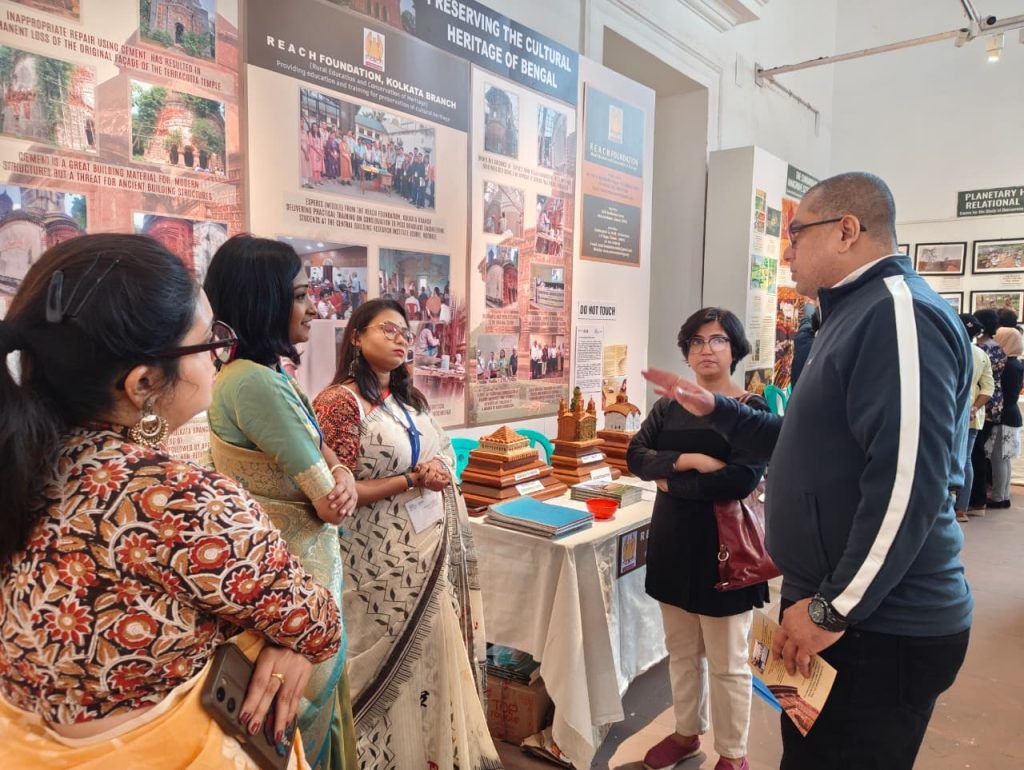
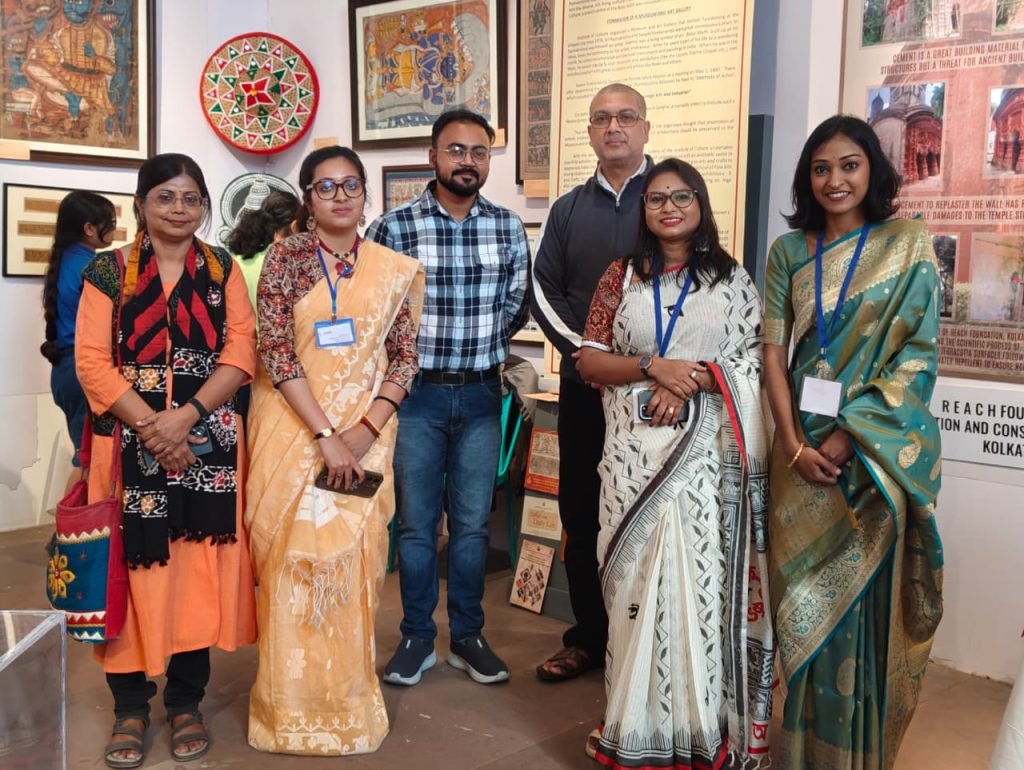
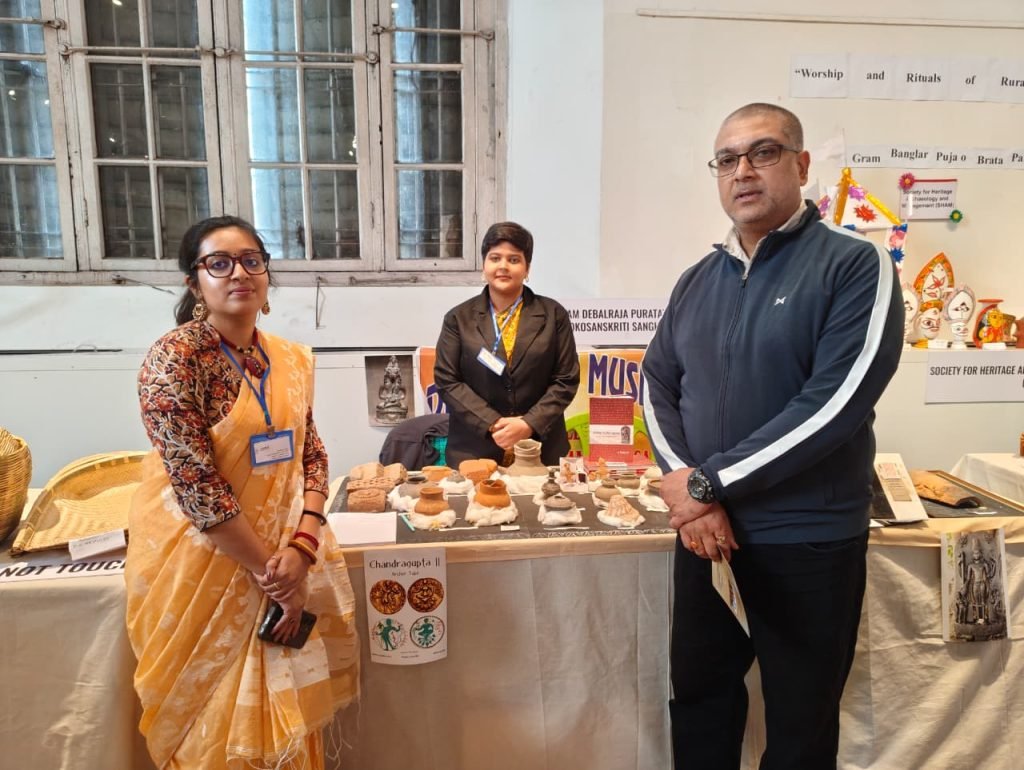
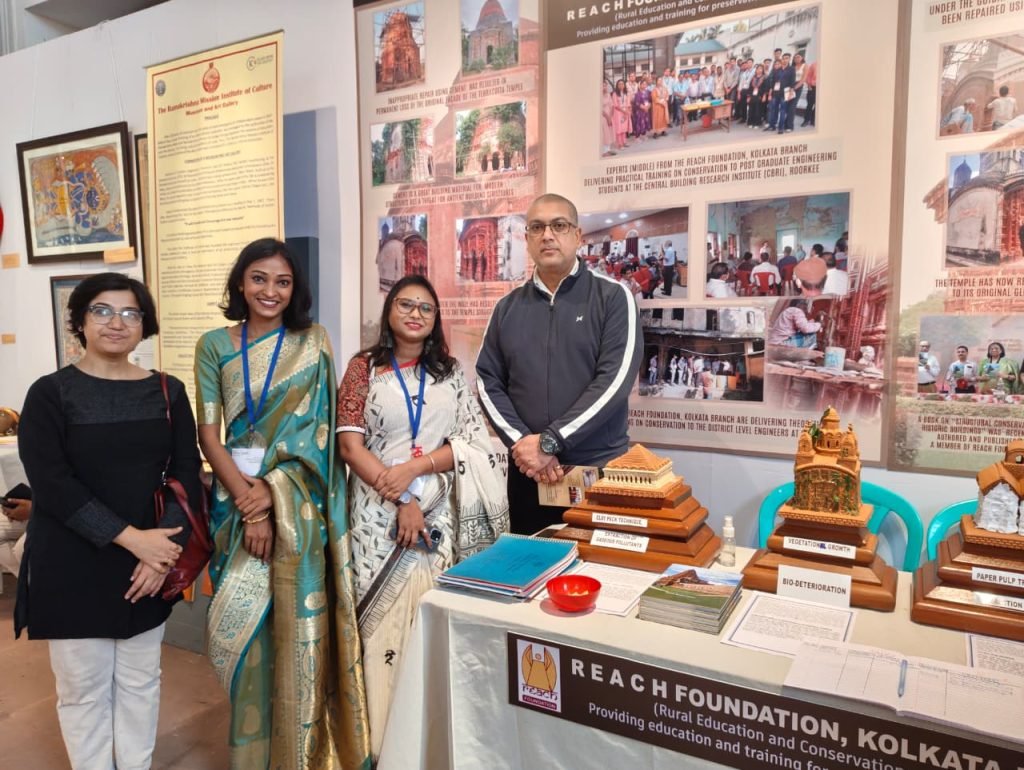
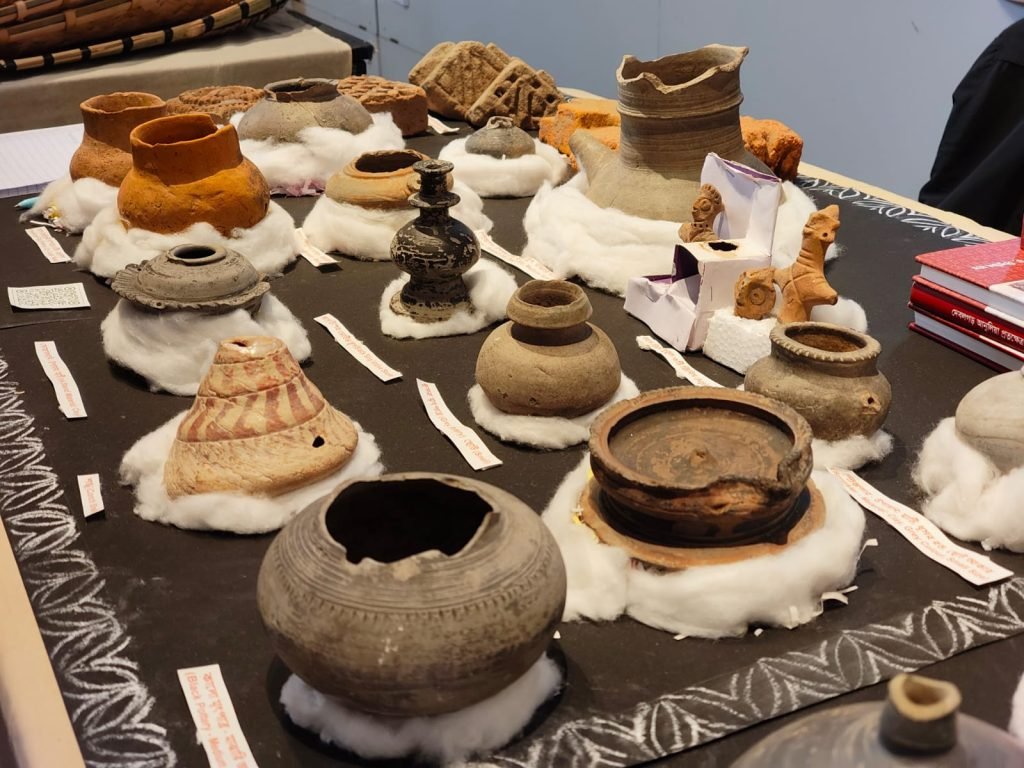
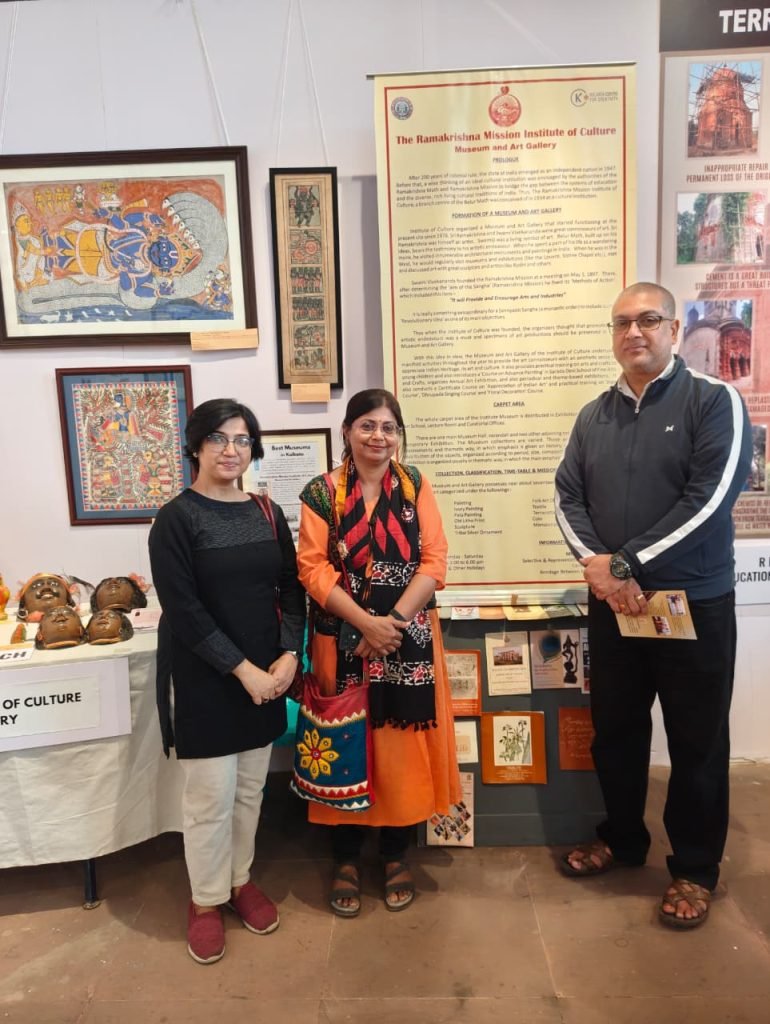
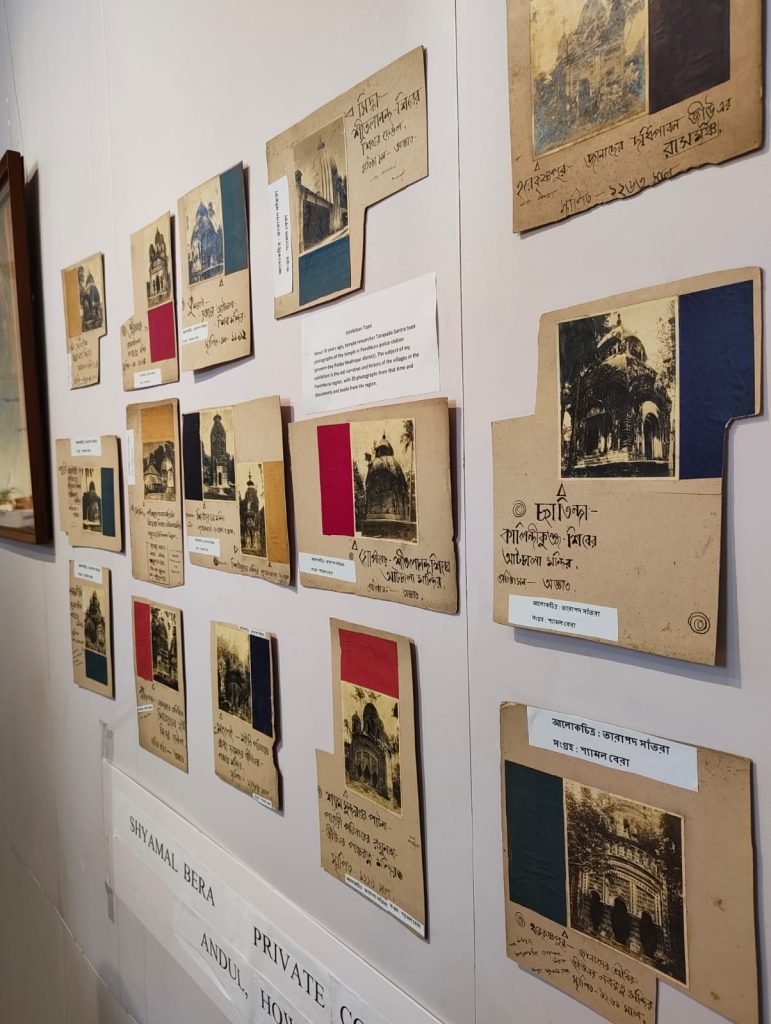
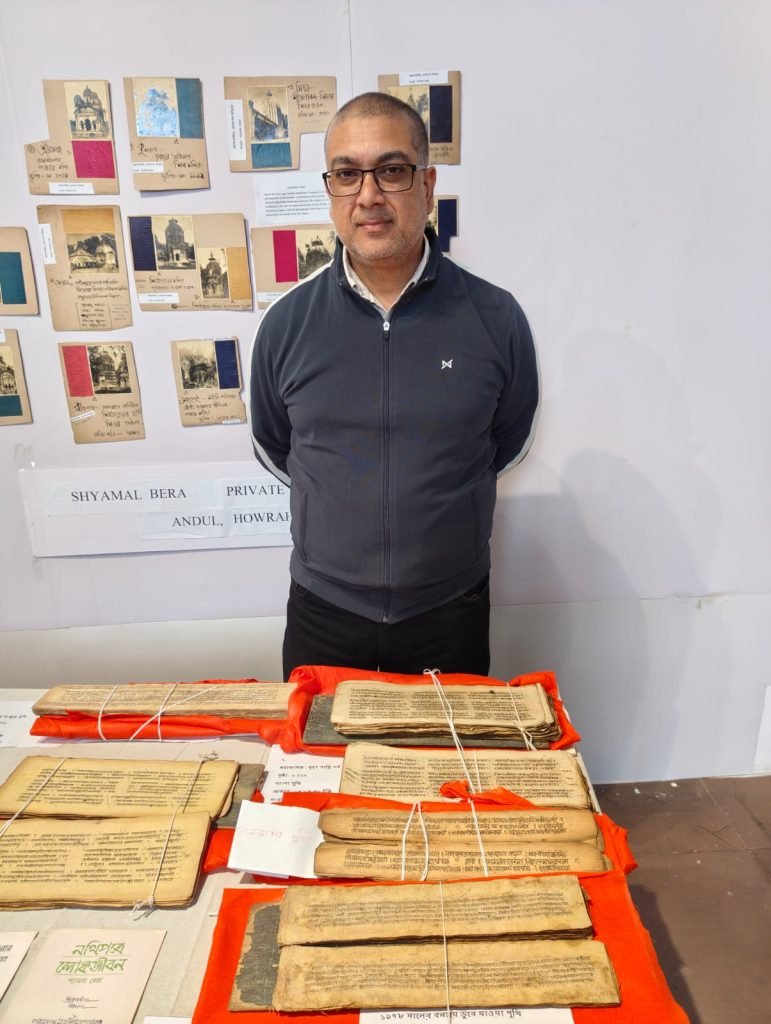
articles
CARVING CONTINUITIES: THE LIVING HERITAGE OF SOAPSTONE ARTISANS
Published
1 month agoon
November 5, 2025By
Suprabho Roy
Soapstone carving is a remarkable craft whose origins stretch back to some of the earliest civilizations in India. Today, this artistic tradition continues among communities whose heritage and skills have been passed down for many generations.
Historical Roots
Soapstone, a metamorphic rock primarily composed of talc, has been used in the Indian subcontinent since the days of the Indus-Saraswati Civilization and the Chalcolithic period. Its historical significance is evident in ancient sites where artifacts such as seals, beads, statues, and small figurines have been found. Key archaeological discoveries, like steatite ringstones from the Shunga-Maurya period and sculptures from the Gupta era, illustrate soapstone’s profound role throughout history. The artistry of temple construction, as seen in Khajuraho, Jabalpur, and Udaipur, is just one facet of the stone’s legacy, with temple artisans employing techniques and tools that are still in use by contemporary soapstone carvers.
Community and Continuity
Carving skills within artisan communities—particularly the Silawat and Vishwakarma—are shared orally and inherited over generations, often spanning four to five generations. Despite the richness of these traditions, written documentation remains scattered and incomplete, making oral testimonies vital in preserving the craft’s continuity. Migration patterns have also contributed to the dispersion and evolution of carving techniques among artisans.
Diversity of Soapstone Craft
The types of sculptures crafted by soapstone artisans are diverse, shaped by regional demands and socio-economic conditions. These range from modern decorative pieces to ritualistic art:
– In Jabalpur (Madhya Pradesh), artisans produce devotional and decorative items such as cookware, toys, and showpieces, with motifs including Shivlings, demigods, elephants, and birds. Soapstone for these works is typically sourced from mines near Bhedaghat.
– The Jhabua-Alirajpur region is known for traditional Gaata sculptures crafted in a relief style, often created in memory of deceased males and worshipped with offerings. Local mines, as well as sources in Gujarat and Rajasthan, supply the necessary soapstone.
– Udaipur’s artisans have adapted to high tourist demand, blending traditional motifs with contemporary designs. Lord Ganesh idols, abstract human figures, and various souvenirs showcase the community’s ability to innovate while maintaining cultural resonance.
Methods and Techniques
Soapstone carving is a collaborative and systematic process :
– Artisans begin with the selection and cutting of raw soapstone using cutters.
– Shaping is performed with hammers and chisels to form the sculpture’s basic structure.
– Fine chisels refine features, while detailing is achieved with pointed tools for intricate patterns.
– Female artisans often smoothen the finished sculptures using sandpaper and water, ensuring a flawless texture.
– Final touches, such as polishing and coloring, are applied with waterproof primers, oil-based substances, or spray paints for gloss and durability.
Cultural Significance and Challenges
The living heritage of soapstone carving continues to hold deep cultural value, maintaining links between the artisans of central and western India since the Bronze Age. Knowledge is primarily transmitted orally, but today faces threats from the rise of mechanization and waning interest among younger generations. Seasonal changes in tourism and market access impact sales, though affordable raw material provides some relief.
The Way Forward
There is an urgent need to recognize, support, and safeguard soapstone artisans to preserve this craft for future generations. Without such efforts, a vital aspect of India’s creative and spiritual history risks fading away. By understanding and promoting the work of these artisans, society can ensure the survival of this unique and profound tradition.
articles
CONSTRUCTING GENDER IDENTITIES IN DEATH : RETHINKING MORTUARY ARCHAEOLOGY THROUGH THE EVIDENCE OF SINAULI
Published
1 month agoon
October 30, 2025By
Suprabho Roy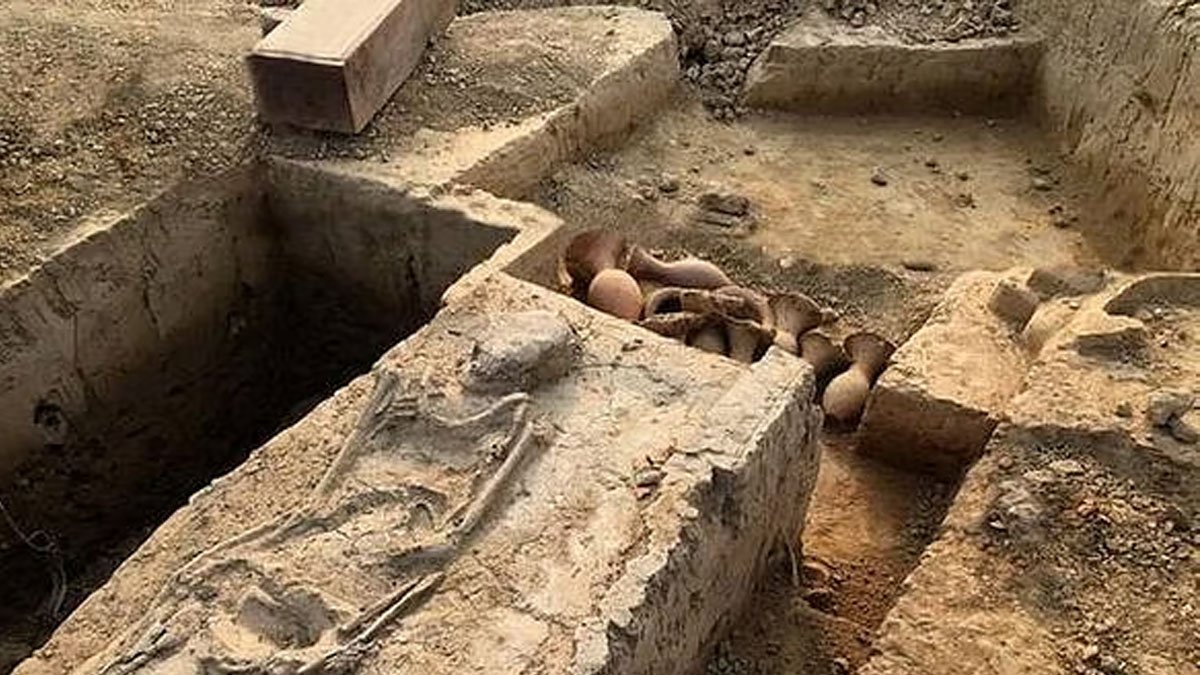
The archaeological site at Sinauli in Uttar Pradesh has provided significant insight into ancient burial practices, gender identities, and social hierarchy in South Asia. The evidence uncovered at Sinauli challenges long-held assumptions and offers fresh perspectives on mortality, gender roles, and elite status in ancient Indian society.
Location and Historical Context
Sinauli is situated in the Baghpat district of western Uttar Pradesh, lying within the fertile Upper Ganga-Yamuna Doab region. It is associated with the Ochre Coloured Pottery (OCP) culture, which dates back to the early second millennium BCE. This site gained attention due to its unique burial practices, especially those involving women and the material assemblages found with their graves.
Overview of Excavations
The Sinauli excavations were initiated in 2005 under archaeologist D.V. Sharma, and further work was conducted in 2018 by Dr. Sanjay Manjul. In 2005, archaeologists uncovered 116 burials, typically oriented north-south, along with ochre-colored pottery. The 2018 excavations revealed even greater complexity, including wooden coffins adorned with copper sheets, rectangular boxes, antenna swords, helmets, shields, pots, and controversial wheeled vehicles—leading to a debate over whether these were chariots or carts.
Types of Burials
Sinauli yielded four primary burial types:
– Symbolic burials without skeletons.
– Primary burials with full skeletons.
– Secondary or fragmented burials.
– Multiple burials containing fragmented remains.
Gender Distinctions in Burial Practices
A significant contribution of Sinauli is its challenge to conventional views on gender and mortuary archaeology. Certain burials, notably those identified by Asko Parpola, show that elite women were sometimes interred in richly decorated coffins with martial symbols such as swords, shields, and wheeled vehicles. Coffins for women featured steatite inlay and were often covered, in contrast to men’s coffins, which generally had copper sheathing and were left uncovered. Such differentiation suggests elaborate symbolism surrounding gender and possibly ritual seclusion or heightened sacredness for women in death.
One highly debated aspect is the absence of feet in Burial-1, which might suggest less earthly mobility or represent a transformation from earthly to transcendent status.
Rethinking Weaponry and Gender
The presence of weapons, such as copper antenna swords and shields, in women’s graves at Sinauli has prompted scholars to reconsider rigid notions of gender roles. These martial objects could signal the dead’s authority—either as warriors or ritual leaders—thus broadening our understanding of gender within ancient funerary contexts. Interestingly, such elaborate martial symbolism is less prevalent in the male burials at Sinauli.
Symbolism of Coffins and Elite Status
Coffins at Sinauli, rare in South Asian archaeology, were more than mere containers; they symbolically transformed the deceased into sacred beings. Their intricate decoration reflects considerable labor, resources, and craftsmanship, indicating elite status and the possibility of gendered authority within the social hierarchy.
Conclusions and Implications
The burial evidence from Sinauli emphasizes material distinctions that reveal social stratification, hierarchy, and constructed gender roles. While the idea of women warriors remains debated, the presence of martial symbols with elite women points towards complex rituals and conceptions of social power in death. Sinauli thus stands out as a crucial site for rethinking gender identities, social class, and the symbolic aspects of funerary practices in ancient India.

Team IHAR at the AMI Festival held in the Indian Museum, Kolkata

CARVING CONTINUITIES: THE LIVING HERITAGE OF SOAPSTONE ARTISANS

CONSTRUCTING GENDER IDENTITIES IN DEATH : RETHINKING MORTUARY ARCHAEOLOGY THROUGH THE EVIDENCE OF SINAULI

Rediscovering Sutanuti: IHAR WB CHAPTER’S Second Heritage Walk

Preserving Bengal’s Intellectual Legacy: IHAR West Bengal Chapter Undertakes Detailed Survey of Uttarpara Joykrishna Mukherjee Public Library

Bharat Varsh – A Cradle of Civilzation – Panel Discussion

Bringing our Gods back home – A Conversation with Shri Vijay Kumar

Panel Discussion on Sati

Bengal’s Glorious and Diverse Heritage- Traditions and Festivals – Panel Discussion

Panel Discussion: Heritage of Firebrand Revolutionaries – Bengal The Seedbed of Revolution

Debugging the wrong historical narratives – Vedveery Arya – Exclusive podcast

The Untold History Of Ancient India – A Scientific Narration

Some new evidence in Veda Shakhas about their Epoch by Shri Mrugendra Vinod ji

West Bengal’s textbooks must reflect true heritage – Sahana Singh at webinar ‘Vision Bengal’

Bringing our Gods back home – A Conversation with Shri Vijay Kumar
Trending
-

 Events2 years ago
Events2 years agoBharat Varsh – A Cradle of Civilzation – Panel Discussion
-

 Videos3 years ago
Videos3 years agoBringing our Gods back home – A Conversation with Shri Vijay Kumar
-

 Videos11 years ago
Videos11 years agoPanel Discussion on Sati
-

 Events8 months ago
Events8 months agoBengal’s Glorious and Diverse Heritage- Traditions and Festivals – Panel Discussion
-

 Events7 months ago
Events7 months agoPanel Discussion: Heritage of Firebrand Revolutionaries – Bengal The Seedbed of Revolution

